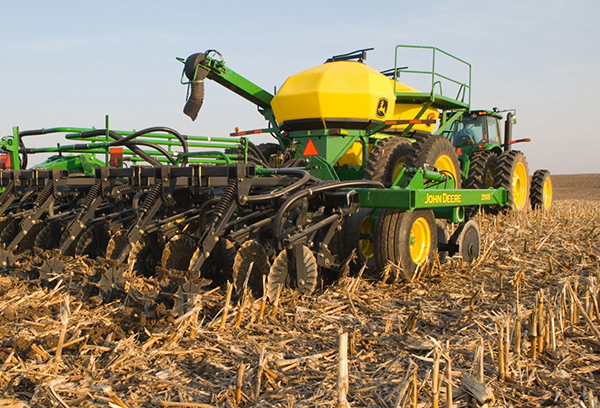Controls weeds
Paraquat is an important tool for weed management. It controls many species and can be used with most crops. Its mode of action means that it is especially valuable where intensive use of glyphosate has caused, or threatens to cause, the development of glyphosate resistant weeds.
Case Study
Although glyphosate is encouraging the continued adoption of no-till, with all the benefits to soil conservation that brings, up to three million hectares in Brazil are now estimated to be infested with glyphosate resistant weeds.
However, an integrated weed control system involves continuing to spray glyphosate for burndown, but following just before or just after planting the crop with an application of a paraquat-based herbicide.
Acts fast
Paraquat acts fast in all seasons, no matter what the conditions: hot, dry, wet, early season or late. Paraquat is rainfast in 15 - 30 minutes. Once sprayed, paraquat kills the weeds and then becomes inactive in the soil – this allows rapid turnaround and planting of another crop.
Case Study
Paraquat controls weeds effectively even if it rains within 15 to 30 minutes of spraying. This excellent rainfastness is unique amongst herbicides and gives farmers important practical benefits. More work can be achieved in between showers and weed control will be better than when using alternative herbicides such as glyphosate or glufosinate and surprised by unpredicted rainfall.
Safe to crops

Paraquat kills weeds precisely providing excellent inter-row weed control without damaging crops. Accidental spray onto crop leaves will not damage the whole plant.
Case Study
Paraquat has enabled the development of two new production technologies for vegetable farmers in the Philippines: Bilis Saka and Bilis Linis. These techniques are only possible because paraquat’s key characteristics as a herbicide are that it controls almost all weeds, but only by contact action, and is inactivated as soon as it reaches the soil. Bilis Saka is used to establish crops in a weed-free soil without the need to plough and Bilis Linis allows weeds growing between the rows of plants to be controlled without fear of damaging the crop.
Protects soil fertility

Using paraquat in conservation tillage programs dramatically reduces soil erosion – this safeguards soil fertility.
Case Study
Non-selective herbicides are essential components of conservation tillage because fields are not plowed to bury weeds, and desiccated vegetation, stover and stubble provide a protective cover to the soil. This helps to minimise erosion, provides habitats for beneficial insects and other wildlife, and undisturbed soil builds higher levels of organic matter, key to good soil structure and fertility.
Increases yields
 Research site in the mountains of Vietnam
Research site in the mountains of Vietnam
Controlling weeds reduces competition with crops for space, water, light and nutrients. This means better quality, clean crops and higher yields.
Case Study
Paraquat’s unprecedented speed of action is often a huge help to farmers up against the weather or looking for earlier harvests to get the best prices.
Results of research show that using paraquat for weed control increased maize yields by more than 50%.
Early planting was crucial to good yields – land preparation with slower acting glyphosate herbicide resulted in much lower yields.
Reduces costs
Plowing and handweeding are time consuming and costly operations. Using paraquat means tillage can be reduced, ideally using no-till where possible, and labor requirements are much less. Paraquat used in conjunction with no-till crop establishment can reduce fuel use by more than 30 litres/ha compared to intensive tillage – this reduces carbon emissions and saves the farmer money.
Case Study
In Vietnam, comparisons have been made between traditional cultivation methods and reduced tillage systems using paraquat for weed control. Paraquat was used before planting and later between the crop rows.
Considerably less labor was needed for the maize crop using the paraquat-based system, as shown in the table. As labor is the major input to crop production this reduced overall costs and boosted profits.

